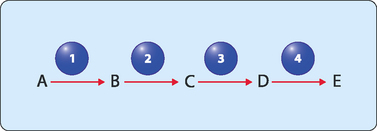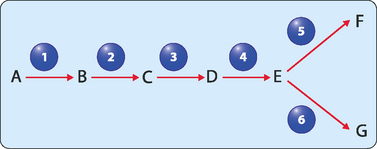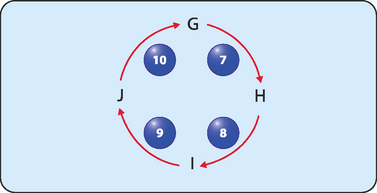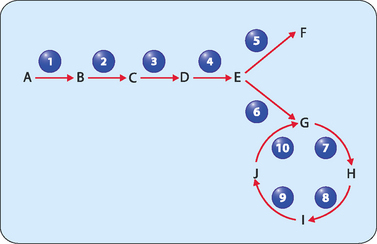chapter 14 Metabolism and its control: chemistry of the cell
 Enzymes catalysing the non-equilibrium reactions of a pathway are often unique to that pathway and determine its direction.
Enzymes catalysing the non-equilibrium reactions of a pathway are often unique to that pathway and determine its direction. The flux through a pathway is determined by a number of factors including substrate availability, enzyme availability and enzyme activity.
The flux through a pathway is determined by a number of factors including substrate availability, enzyme availability and enzyme activity. Energy and electrons are shuttled by nucleotide coenzymes that exist in limited numbers in the cell.
Energy and electrons are shuttled by nucleotide coenzymes that exist in limited numbers in the cell.What is metabolism?
Catabolic reactions involve the breakdown of complex molecules to yield chemical energy. In general, these reactions are oxidative and donate electrons (see Ch 16). Anabolic reactions involve the synthesis of larger, more complex molecules and are reductive, requiring a source of electrons (see Ch 17).
Metabolic pathways
The many thousands of reactions occurring in a cell are each catalysed by an enzyme. As was discussed in Chapter 7 each enzyme is specific for a certain substrate and efficient catalysis will only occur with this substrate. The breakdown or synthesis of a complex product cannot be achieved by a single enzyme. So, much like an assembly line, many enzymes work in concert to complete the breakdown or synthesis. As can be seen in Figure 14-1 the first enzyme (1) in the sequence will carry out its reaction utilising the substrate A and giving the product B. B then becomes the substrate for enzyme 2, which will give the product C which, in turn, could become the substrate for a third enzyme and so on. These sequential, enzyme-catalysed reactions are known as a metabolic pathway. In this simple example, compounds A to E can also be termed metabolites and all except A and E can be termed intermediates. In Figure 14-1, the sequence is a simple linear conversion of A to E via the intermediates B, C and D. However, in most cases this is an oversimplification. Metabolic pathways are often not linear. They may be branching (Fig 14-2), or cyclic (Fig 14-3) or they may be combined (Fig 14-4). In fact, many metabolites are involved in more than one metabolic pathway. In this way all of the different chemical reactions and pathways in cells are interlinked to form a metabolic map. An example of a metabolic map is given in Figure 14-5.
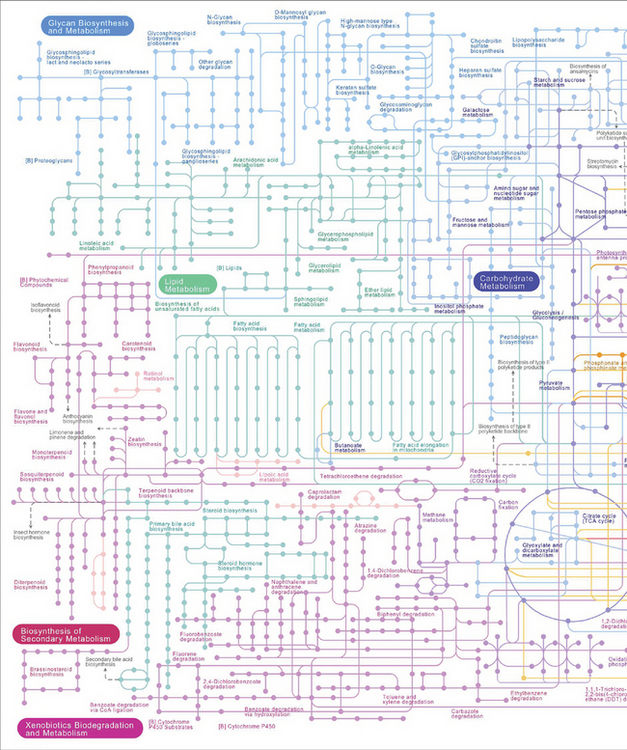

FIGURE 14-5 A graphical representation of many of the metabolic pathways that can be found in a cell.
Kyoto Encyclopedia of Genes and Genomes (KEGG). Introduction to KEGG. Available at http://www.genome.jp/kegg/kegg1.html. Accessed 13 November 2010.
[source: http://www.genome.jp/kegg/, 01100 2/26/10 (c) Kanehisa Laboritories]
However, it must be remembered that the enzymes in a cell are not arranged into neatly defined pathways as shown here. This form of metabolic map simply allows us to visualise the reactions that can occur in the cell and how these reactions are linked.
Understanding metabolism
When one looks at a metabolic map such as that in Figure 14-5 it would appear that understanding metabolism would be an almost impossible task. However, the complexity of this map can be reduced by categorising the reactions and pathways on it. It has already been seen that pathways can be placed into two large groups, those that are anabolic and those that are catabolic. The reactions carried out by the many hundreds of enzymes can also be placed into a number of groups, based on the type of reaction they catalyse (see Figure 5-4A and Table 7-1). The most important ones are:




